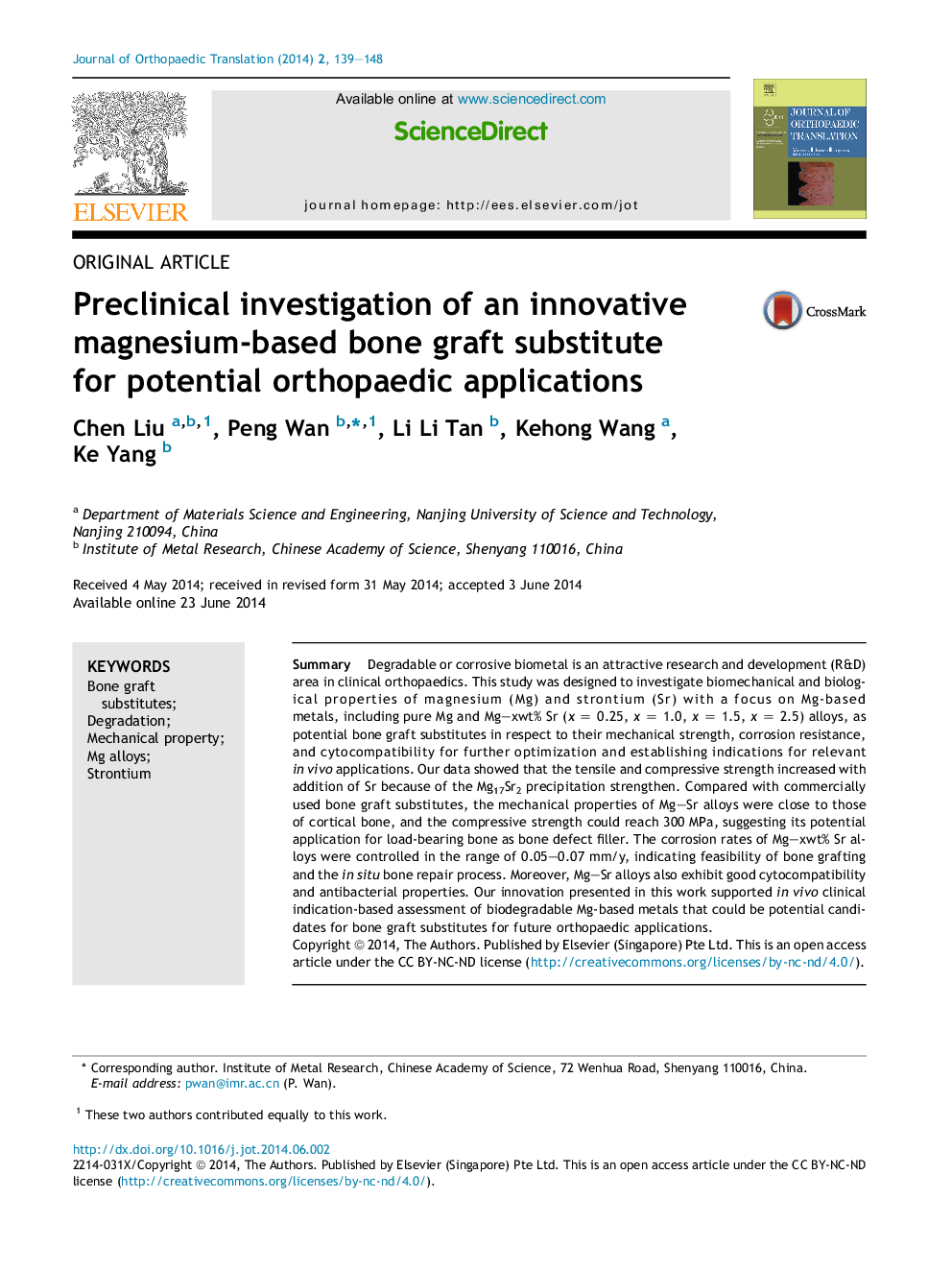| Article ID | Journal | Published Year | Pages | File Type |
|---|---|---|---|---|
| 2740013 | Journal of Orthopaedic Translation | 2014 | 10 Pages |
SummaryDegradable or corrosive biometal is an attractive research and development (R&D) area in clinical orthopaedics. This study was designed to investigate biomechanical and biological properties of magnesium (Mg) and strontium (Sr) with a focus on Mg-based metals, including pure Mg and Mg–xwt% Sr (x = 0.25, x = 1.0, x = 1.5, x = 2.5) alloys, as potential bone graft substitutes in respect to their mechanical strength, corrosion resistance, and cytocompatibility for further optimization and establishing indications for relevant in vivo applications. Our data showed that the tensile and compressive strength increased with addition of Sr because of the Mg17Sr2 precipitation strengthen. Compared with commercially used bone graft substitutes, the mechanical properties of Mg–Sr alloys were close to those of cortical bone, and the compressive strength could reach 300 MPa, suggesting its potential application for load-bearing bone as bone defect filler. The corrosion rates of Mg–xwt% Sr alloys were controlled in the range of 0.05–0.07 mm/y, indicating feasibility of bone grafting and the in situ bone repair process. Moreover, Mg–Sr alloys also exhibit good cytocompatibility and antibacterial properties. Our innovation presented in this work supported in vivo clinical indication-based assessment of biodegradable Mg-based metals that could be potential candidates for bone graft substitutes for future orthopaedic applications.
